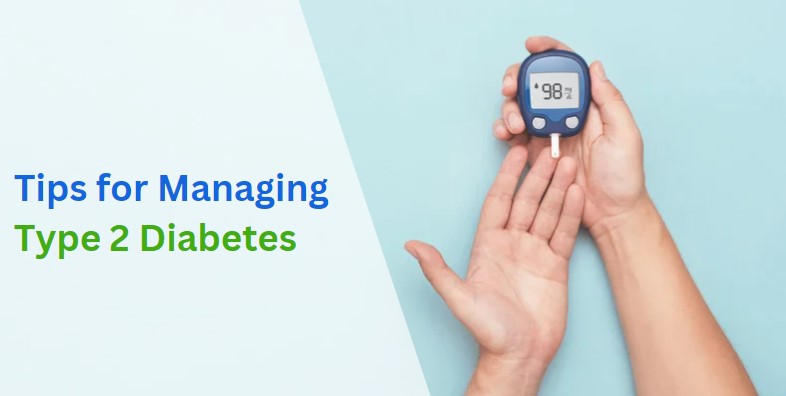
TIPS FOR MANAGING TYPE 2 DIABETES
Managing type 2 diabetes involves a combination of lifestyle changes, medication, and regular monitoring to maintain blood sugar levels within a target range. Effective management can help prevent complications and improve overall health. Here are some key tips for managing type 2 diabetes:
1. Healthy Eating
Maintaining a balanced diet, eating regular meals and being mindful of your portions are healthy eating habits that can assist in managing your diabetes. Persons with diabetes want to focus on eating whole foods. This means that you should consume plenty of whole grains, lean proteins, healthy fats, and a variety of fruits and vegetables. You will want to carefully monitor your carbohydrate intake as they most significantly impact your blood sugar levels. Eating complex carbohydrates like whole grains and legumes over simple sugars can help mitigate spikes. Monitoring your portion sizes can prevent spikes in your blood sugar levels. In fact, using a smaller plate can help with your portion sizes and reduce the temptation to overeat. It is important to eat regular meals and snacks with the goal of maintaining your blood sugar levels. Each meal should include a mix of carbohydrates, proteins, and fats in each meal to slow the absorption of sugar into the bloodstream.
2. Regular Physical Activity
Increasing regular physical activity can be difficult but is highly recommended. 30 minutes of moderate aerobic exercise, such as walking, cycling or swimming 5 days a week can help improve insulin sensitivity and control blood sugar levels. In addition, strength training exercises at least two times a week to build muscle can help with blood sugar control. In the case that you wish to break up your physical activity, incorporating bursts of physical activity into your daily routine can be just as effective. This can include stretching, household chores or short walks. While incorporating these activities, it is also important to monitor your bodies response. Monitoring your blood sugar levels before and after each exercise, especially when starting a new activity.
3. Weight Management
Maintaining a healthy weight is important for managing your diabetes. Gradual weight loss through diet and exercise can improve insulin sensitivity and help control your blood sugar levels. Setting realistic weight management goals is crucial to your success. Consider seeking support in the form of a dietitian or physician who can develop a personalized plan. Self education is also important and can help you in the case you wish to embark on your weight management journey yourself.
4. Medication Management
After being diagnosed with type two diabetes, you may be prescribed new medications that will help with the management of your diabetes. It is important that you adhere to your new medication regimens but also understand why you are taking it. Education and advocacy play a role in the management of your circumstance and you will want to be made aware of the medications purpose, your dosage, and potential side effects. Knowing these details will help you communicate with your doctor about your diabetes management.
5. Regular Monitoring and Health Check-Ups
With new aged technology, regularly monitoring your blood sugar levels has never been easier and all of the data can be stored on a health app. These digital logs will assist you in understanding your bodies response to food, activity and medications. This data will be helpful for your routine screenings. Maintaining regular checkups with your doctor and having regular testing performed will help determine the direction your diabetes management goes. These checkups will allow your doctor to make informed decisions about your current course of treatment and if anything needs to be changed.
7. Avoid Tobacco and Limit Alcohol
consumption of alcohol and frequent smoking can increase your risks of diabetes complications. Excessive alcohol consumption can cause both high and low blood sugar levels. Consult with your physician for proper instruction and support for managing Tobacco and alcohol consumption.
8. Education and Support
Lastly and perhaps most importantly is stay informed and seek the appropriate support for you. Learning about diabetes can help with your quality of life as a diabetic and help you make decisions about your health. It is important for you to know that you are not alone. Diabetes is a chronic disease that affects over 3 million Canadians with 90% of the cases being type 2 diabetes. There are plenty of ways to seek support. Some examples are support groups, online resources, education programs and counseling.
Conclusion
Managing type 2 diabetes is an ongoing process that requires attention to diet, exercise, medication, and overall lifestyle. Working closely with healthcare professionals and maintaining a proactive approach to self-care can help individuals manage their condition effectively and reduce the risk of complications. Contact My Place Home Care today and we can assist you with proper meal preparation and exercise assistance that will help you manage your diabetes.

